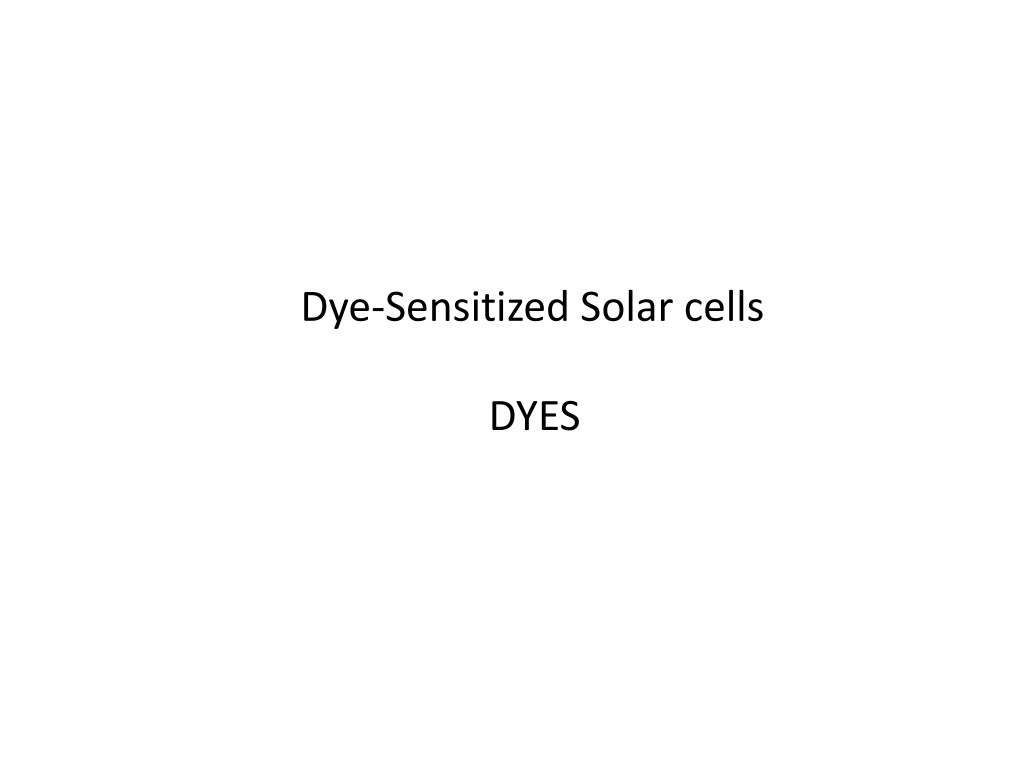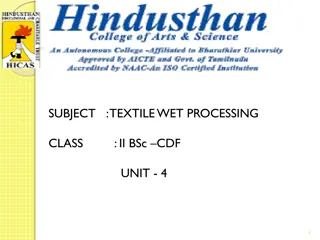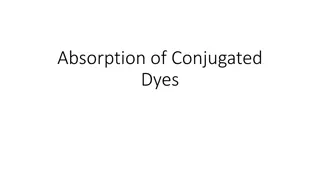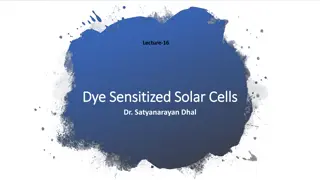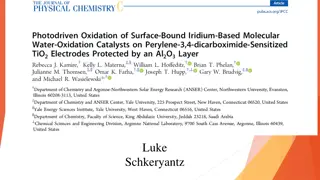Understanding Dye-Sensitized Solar Cells and Types of Dyes in Solar Cell Technology
Explore the world of dye-sensitized solar cells and the various types of dyes used in these innovative solar energy technologies. Discover the difference between metal-complexes and organic dyes, learn about the advantages and disadvantages of different dyes, and delve into the absorption spectra of these dyes to understand their role in enhancing solar cell efficiency.
Download Presentation

Please find below an Image/Link to download the presentation.
The content on the website is provided AS IS for your information and personal use only. It may not be sold, licensed, or shared on other websites without obtaining consent from the author. Download presentation by click this link. If you encounter any issues during the download, it is possible that the publisher has removed the file from their server.
E N D
Presentation Transcript
Photoanodes DYES types of dyes additives in dyes state-of-the-art what has to be improved
Types of dyes Two classes of dyes: Metal-complexes and organic dyes METAL COMPLEXES ORGANIC DYES Donor-Pi-Acceptor N3 N719 N749 or black dye Porphyrin Phthalocyanine
Types of dyes- Metal complexes Changing the functional group change the absorption spectrum
Types of dyes- Metal complexes Changing the functional group change the absorption spectrum
Types of dyes- Metal complexes Advantages of Ru-Complexes -Panchromatic absorption -Moderately easy to synthesize -Very stable on the surface of titanium dioxide - Absorption spectrum can be tuned easily Cobalt electrolyte species Disadvantages -Ligand exchange with ligands from electrolyte species -Expensive Ru-metal Ru Dye
Some dyes worth remembering Types of dyes- Metal complexes N749 or black dye DX1 is the most red absorbing dye
Some dyes worth remembering Types of dyes- Metal complexes Red Shifted Absorption spectrum, IPCE, JSC DX1 > Black Dye > N719
Types of dyes- Organic dyes Y123 dye - Donor-Pi-Acceptor
Types of dyes- Organic dyes porphyrin dyes Porphyrin core PUSH-PULL PORPHYRINS YD2-O-C8
Types of dyes- Organic dyes porphyrin dyes Absorption spectra of porphyrin
Types of dyes- Organic dyes phthalocyanine dyes Porphyrin core Phthalocyanine
Types of dyes- Organic dyes phthalocyanine dyes Absorption spectra
Typical PV values Jsc (mA cm-2) Dye type Voc (mV) PV efficiency Ruthenium 17 to 20 700 to 800 9 to 11 Organic dyes (D-Pi-A) 15 to 18 700 to 900 7 to 10 With iodide/triiodide electrolyte Organic dyes Porphyrin 15 to 17 700 to 800 7 to 10 Organic dyes Phthalocyanine Varies a lot Varies a lot 3 to 7 With Co2+/Co3+ electrolyte Organic dyes Porphyrin 17 to 19 800 to 950 11 to 13
All about dye research 1. Shifting the absorption spectrum to red 2. Inexpensive materials and simple synthetic procedure 3. Stable dye on surface by the varying the functional groups
